Schefflera Care - Information On The Schefflera Houseplant
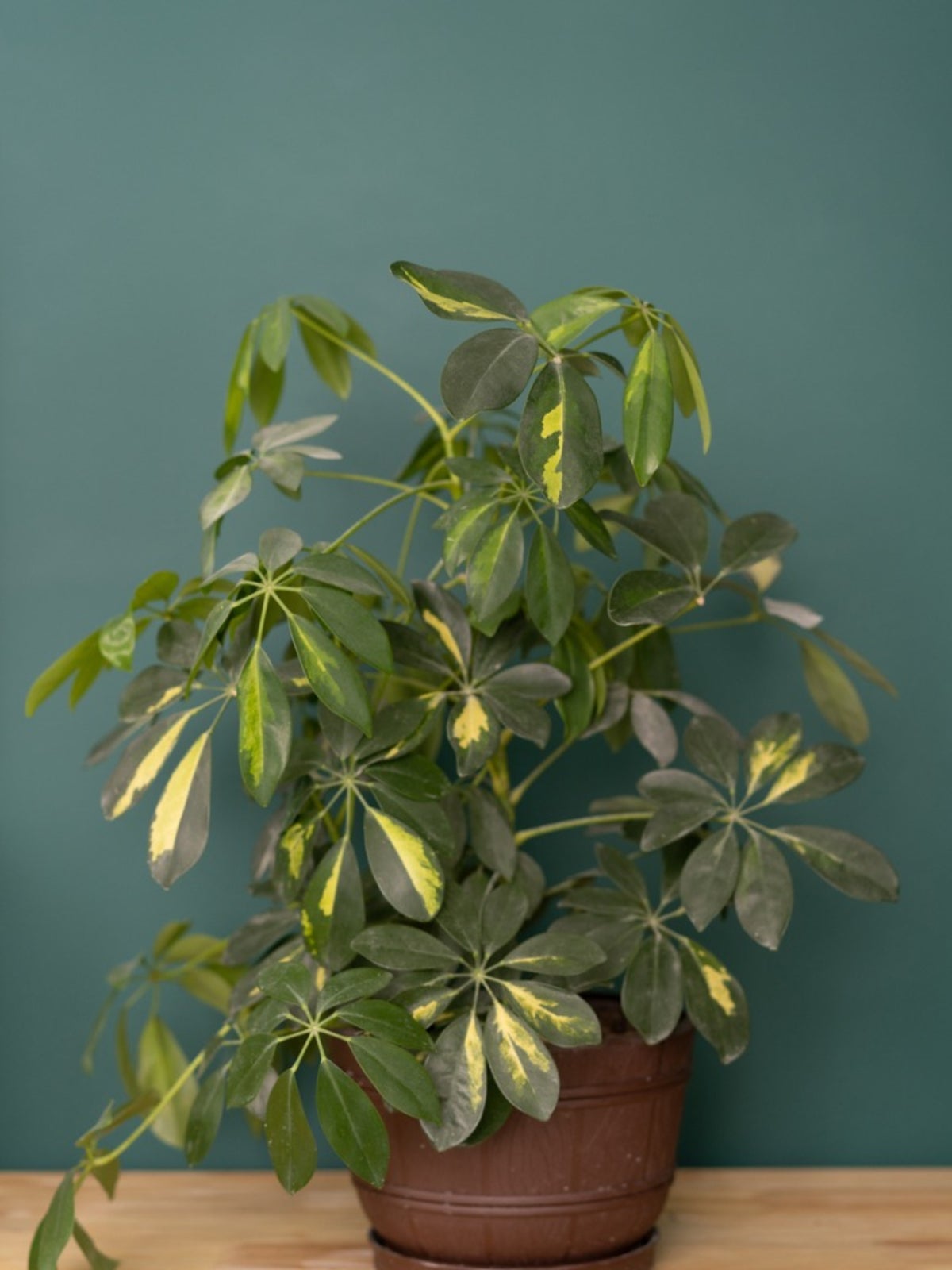

The schefflera houseplant is a popular plant and comes in many varieties. The most well known are the umbrella tree and the dwarf umbrella tree. One of the reasons the plant is popular is because schefflera plant care is so easy, but, while schefflera care is easy, the plant does need to be cared for. Keep reading to learn more about growing schefflera and keeping it healthy and lush.
Schefflera Plant Care Instructions
There are two very important parts to proper schefflera care. The first is correct sunlight and the second is proper watering.
Light - Schefflera plants are medium light plants, which means that they need bright but indirect light. A common complaint about schefflera plants is that they get leggy and floppy. This problem is caused by too little light. Making sure that you are growing schefflera in the right kind of light will help prevent leggy growth. On the other side, you do not want to place a schefflera houseplant in direct, bright light, as this will burn the leaves.
Water - When growing schefflera, be aware that watering correctly will help to keep your schefflera houseplant healthy. To water correctly, wait until the soil in the pot dries out and then thoroughly soak the soil when you water. Often people will overwater their schefflera plant and this will eventually kill it. Yellow leaves that fall off the plant is a sign that you may be watering too much. Additional care of schefflera includes pruning and fertilization.
Pruning - Your schefflera may also need to be pruned occasionally, especially if it is not getting quite enough light. Pruning a schefflera is simple. Just cut off what you feel is overgrown or leggy back to a size or shape you like. Schefflera houseplants rebound quickly from pruning and will look even fuller and more lush shortly after pruning.
Fertilizer - You do not need to fertilize your schefflera, but if you would like to, you can give it a half solution water soluble fertilizer once a year. Schefflera plants are poisonous to people and animals, if eaten.
It is not often fatal, but will cause a burning sensation, swelling, difficulty swallowing, and in severe cases, difficulty breathing.
Gardening tips, videos, info and more delivered right to your inbox!
Sign up for the Gardening Know How newsletter today and receive a free copy of our e-book "How to Grow Delicious Tomatoes".
Schefflera Houseplant Pests and Diseases
Schefflera plants are not often bothered by pests or disease, but it can happen occasionally. Spider mites and mealybugs are the most common pests that affect schefflera plants. In light cases of infestation, washing the plant with water and soap will normally eliminate the pests.
With heavier infestations, you many need to treat the plant with an insecticide like neem oil. Also, be aware that pests typically attack this plant if it is stressed. If your schefflera has pests, this is likely a sign it is either getting too little light or too much water.
The most common disease that affects schefflera is root rot. This disease is brought on by overwatering and poor drainage in the soil.

Heather Rhoades founded Gardening Know How in 2007. She holds degrees from Cleveland State University and Northern Kentucky University. She is an avid gardener with a passion for community, and is a recipient of the Master Gardeners of Ohio Lifetime Achievement Award.
-
 Grow ‘Karl Rosenfield’ Peony Plants For The Ultimate Frilly Border Beauties And Cut Flowers
Grow ‘Karl Rosenfield’ Peony Plants For The Ultimate Frilly Border Beauties And Cut FlowersFor frilly double magenta peony petals infused with a heady fragrance, grow ‘Karl Rosenfield’ peony plants. Here’s how to cultivate the ultimate plushy blooms
By Tonya Barnett
-
 10 Common Composting Problems That Can Spoil Your Garden Gold – Plus Easy Fixes
10 Common Composting Problems That Can Spoil Your Garden Gold – Plus Easy FixesLearn how to troubleshoot common composting issues before they ruin your stash – from bad smells and bugs to materials not breaking down as they should.
By Susan Albert
-
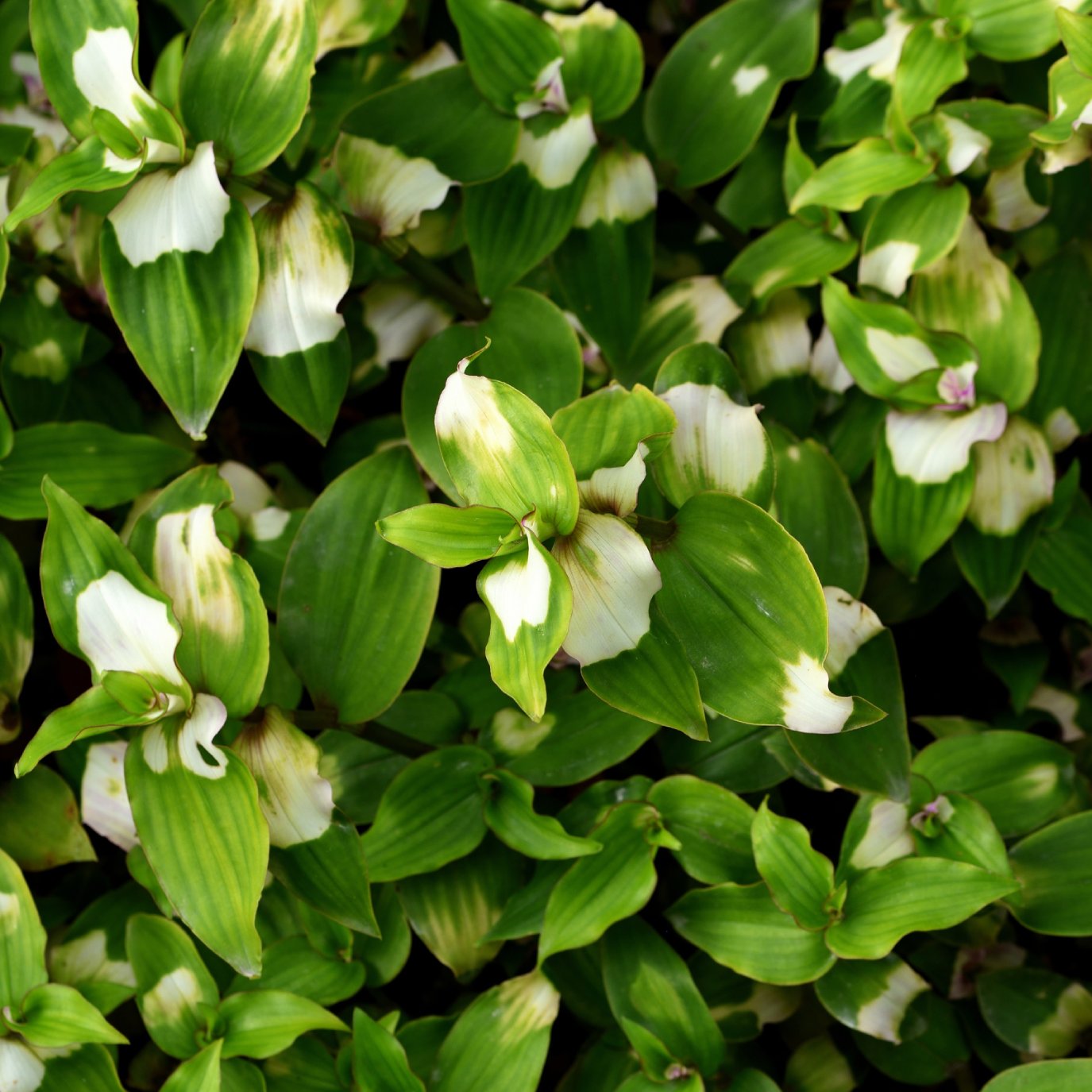 How To Grow Alpine Schefflera: Cultivate The Ultimate Undemanding Umbrella Houseplant
How To Grow Alpine Schefflera: Cultivate The Ultimate Undemanding Umbrella HouseplantIf you love pretty houseplants you’ll want to grow Alpine Schefflera. It’s not terribly fussy and is a graceful addition to any indoor plant collection.
By Tonya Barnett
-
 Why Is My Schefflera Leggy – How To Fix Leggy Schefflera Plants
Why Is My Schefflera Leggy – How To Fix Leggy Schefflera PlantsIs your schefflera too leggy? Take a look here at what causes leggy schefflera plants and what you can do to improve their appearance.
By Raffaele Di Lallo
-
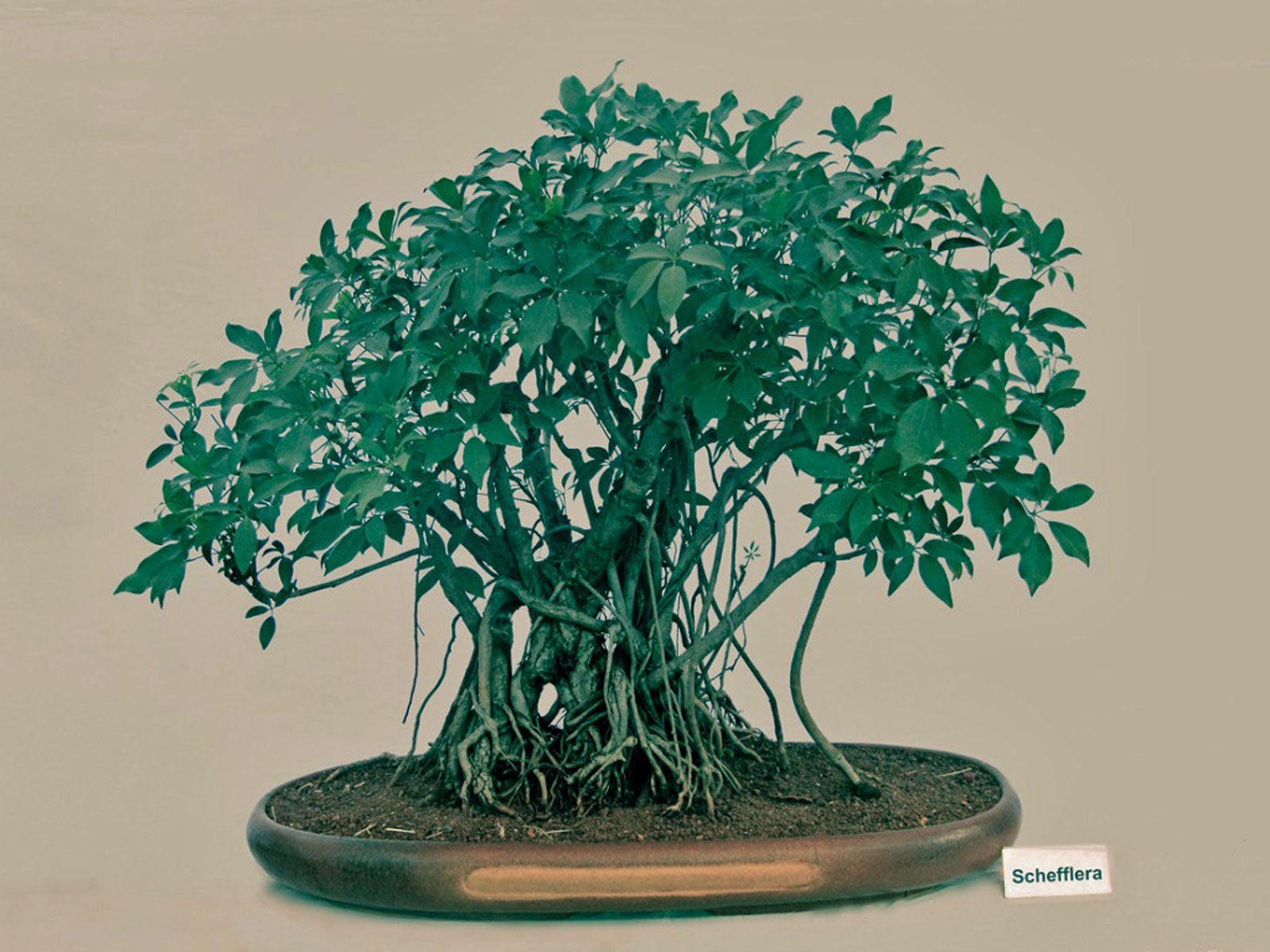 Schefflera Bonsai Care – Growing And Pruning Schefflera Bonsais
Schefflera Bonsai Care – Growing And Pruning Schefflera BonsaisIf you want to know how to make a schefflera bonsai tree, click here for information on pruning schefflera bonsais and caring for them.
By Teo Spengler
-
 Schefflera Repotting: Transplanting A Potted Schefflera Plant
Schefflera Repotting: Transplanting A Potted Schefflera PlantIn the wild, in-ground plants can reach 8 feet (2 m.) in height but you can easily keep it smaller by tip pruning. Transplanting a potted Schefflera will encourage new growth and keep the root system happy. Learn how to repot a Schefflera plant in this article.
By Bonnie L. Grant
-
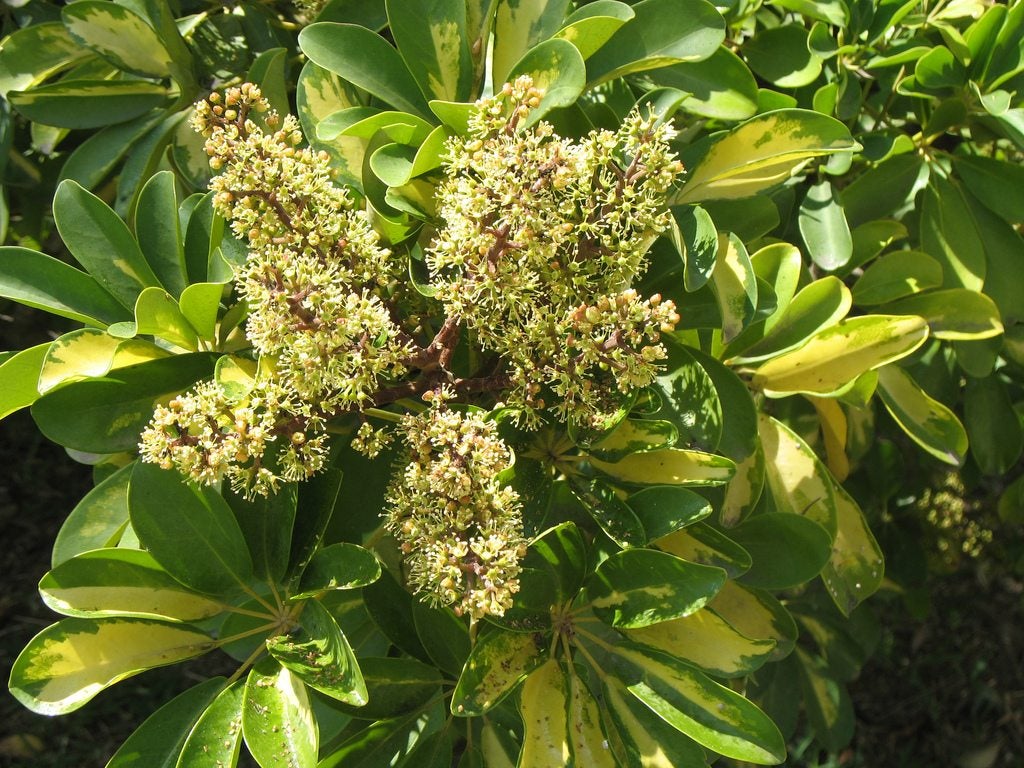 Does Schefflera Bloom: Information On Schefflera Plant Flowers
Does Schefflera Bloom: Information On Schefflera Plant FlowersSchefflera is popular as a houseplant and is usually grown for its attractive foliage. Most people in temperate regions have never seen a schefflera blooming, and it would be easy to assume that the plant doesn't produce flowers. Learn more in this article.
By Ilana Goldowitz Jimenez
-
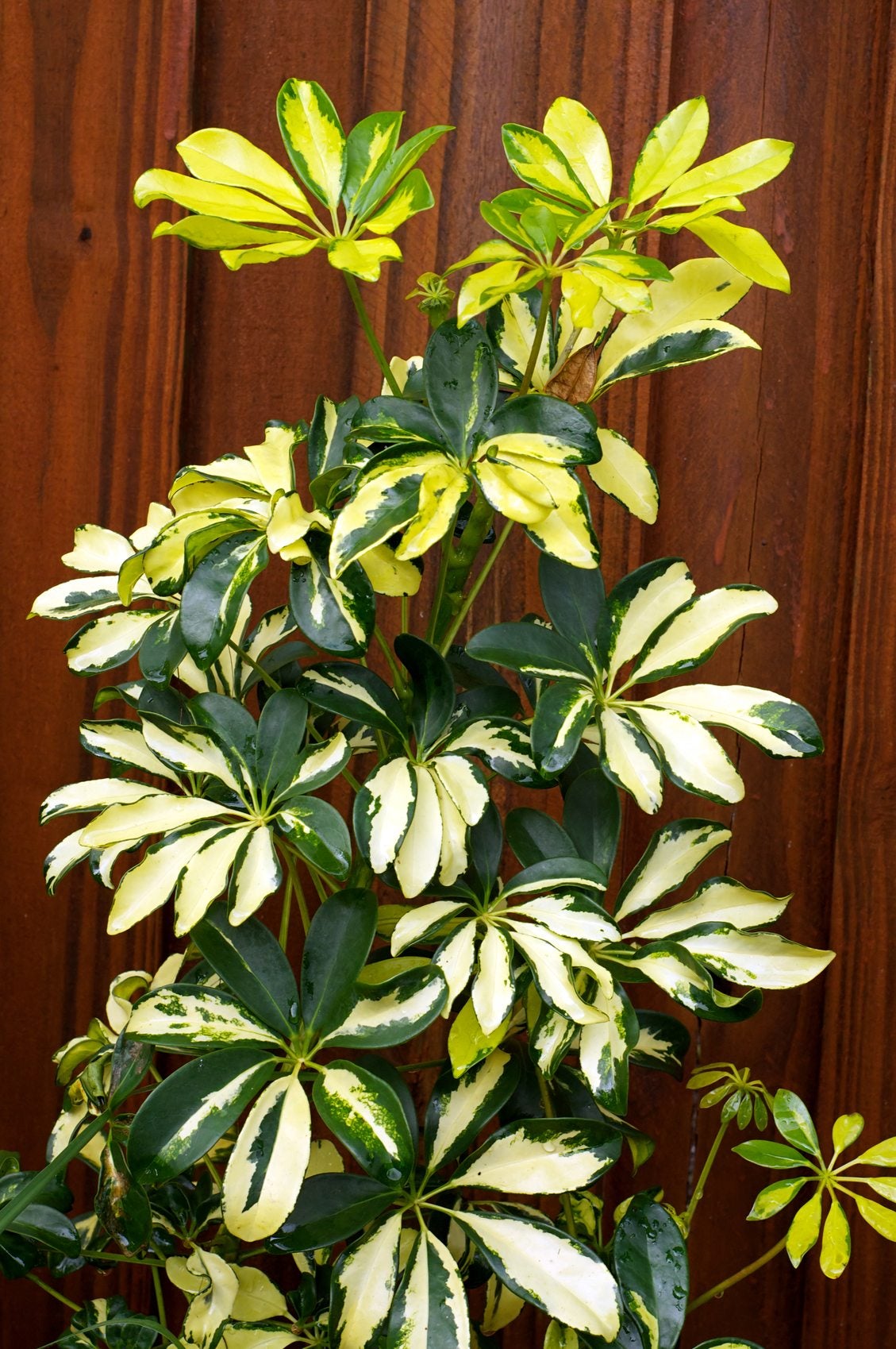 Schefflera Plant Pruning: Tips On Cutting Back Schefflera Plants
Schefflera Plant Pruning: Tips On Cutting Back Schefflera PlantsLife indoors in a pot can be hard on a plant, and can often result in leggy, unhealthy-looking shapes. That's when it's time to prune. Learn more about trimming schefflera houseplants and how to prune a schefflera in this article.
By Liz Baessler
-
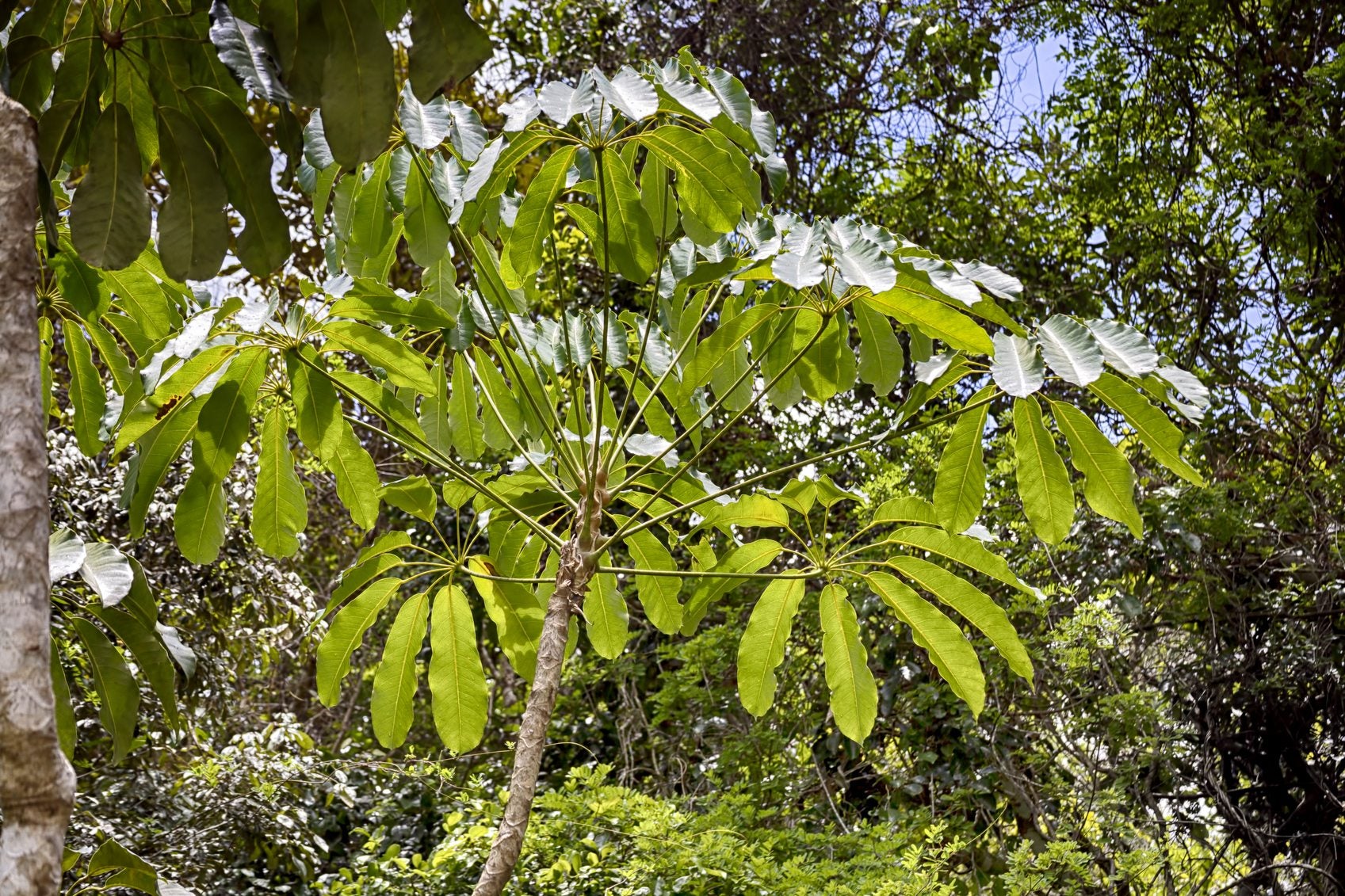 Outdoor Schefflera Care: Can Schefflera Plants Grow Outside
Outdoor Schefflera Care: Can Schefflera Plants Grow OutsideCan Schefflera plants grow outside? Sadly, the plant is not reliably hardy below United States Department of Agriculture zones 10 and 11, but it will make an interesting container specimen that can be moved indoors. Learn more in this article.
By Bonnie L. Grant
-
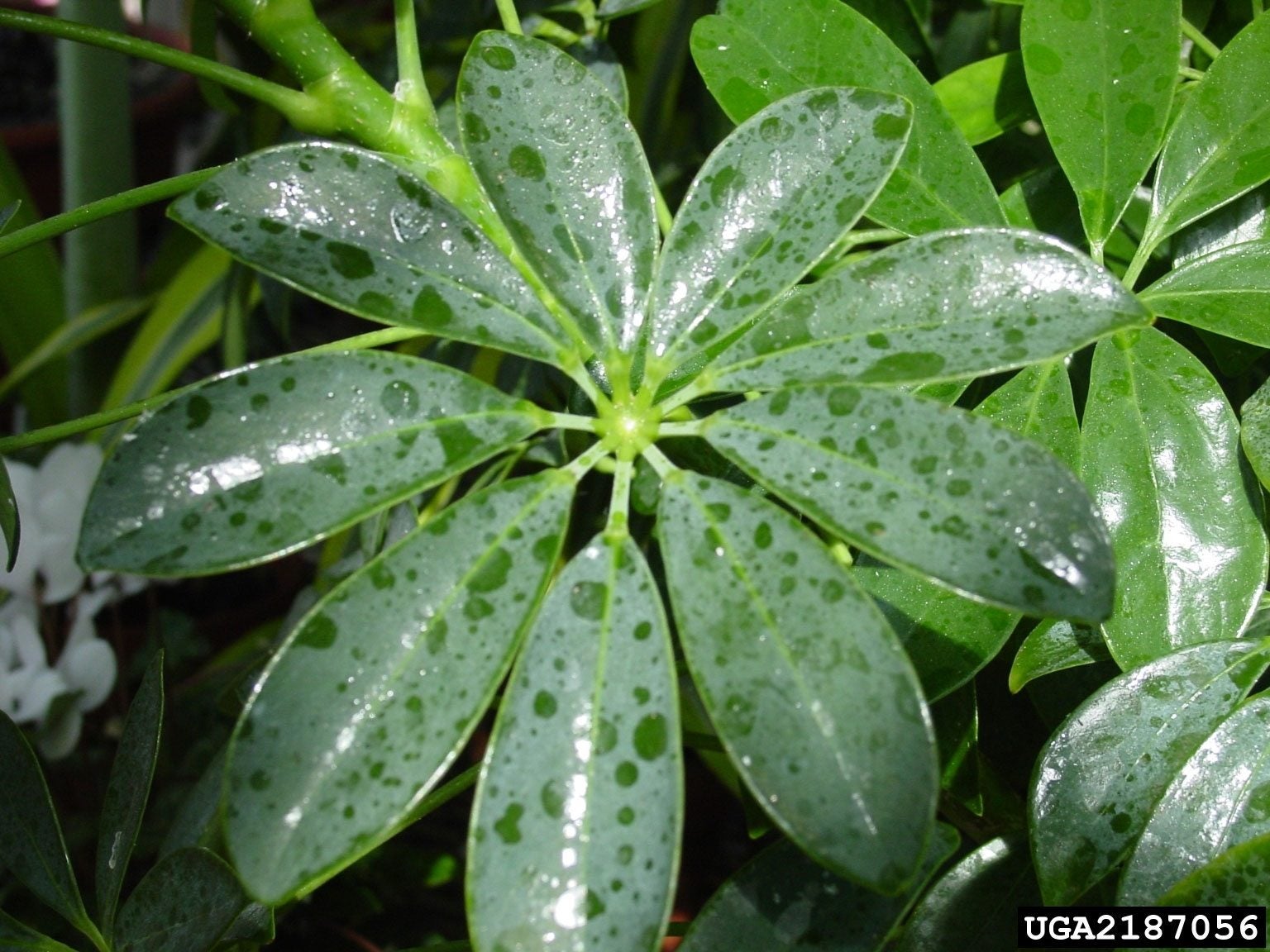 Sticky Schefflera Plant: Why Is My Schefflera Sticky
Sticky Schefflera Plant: Why Is My Schefflera StickySchefflera plants are remarkably tolerant houseplants and do well in a variety of situations; however, they are also prey to insect pests. Sticky Schefflera leaves are likely a symptom of some hitchhiking bugs that are sucking the life out of your prized plant.
By Bonnie L. Grant